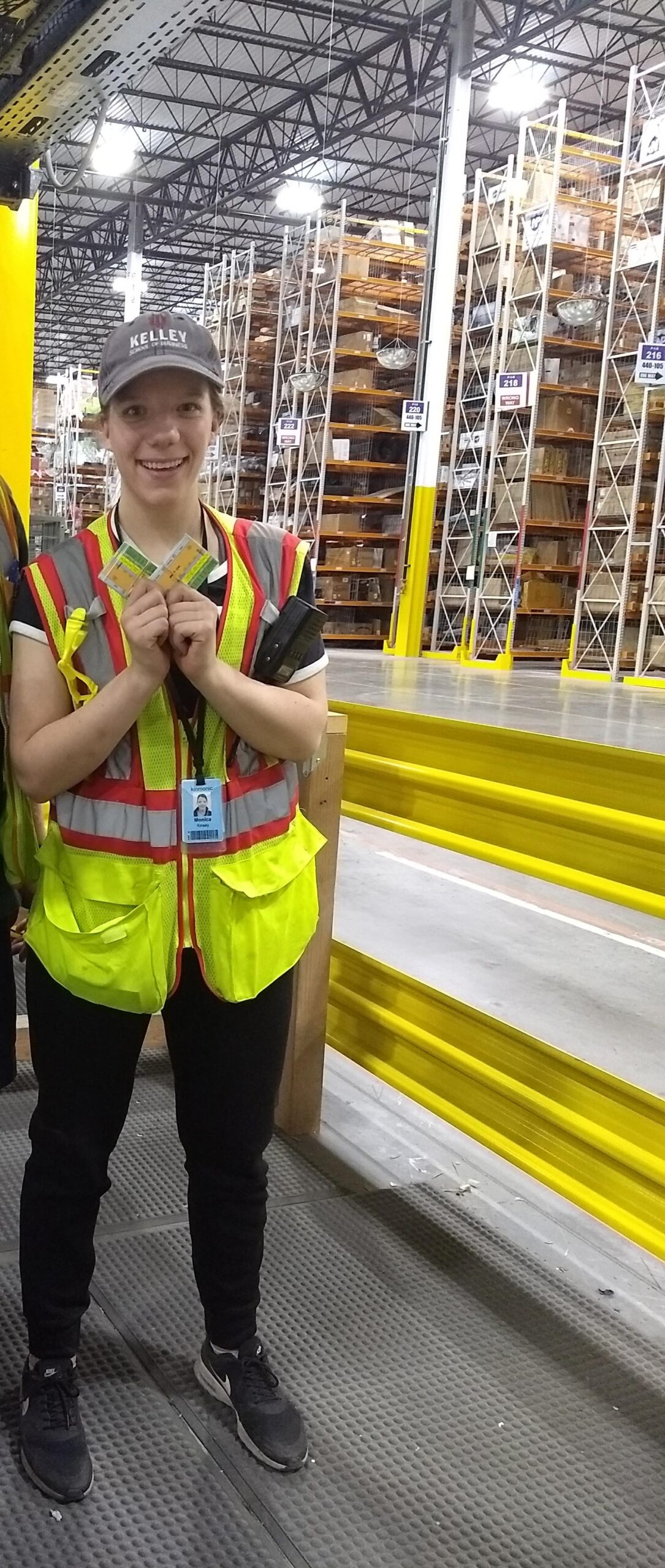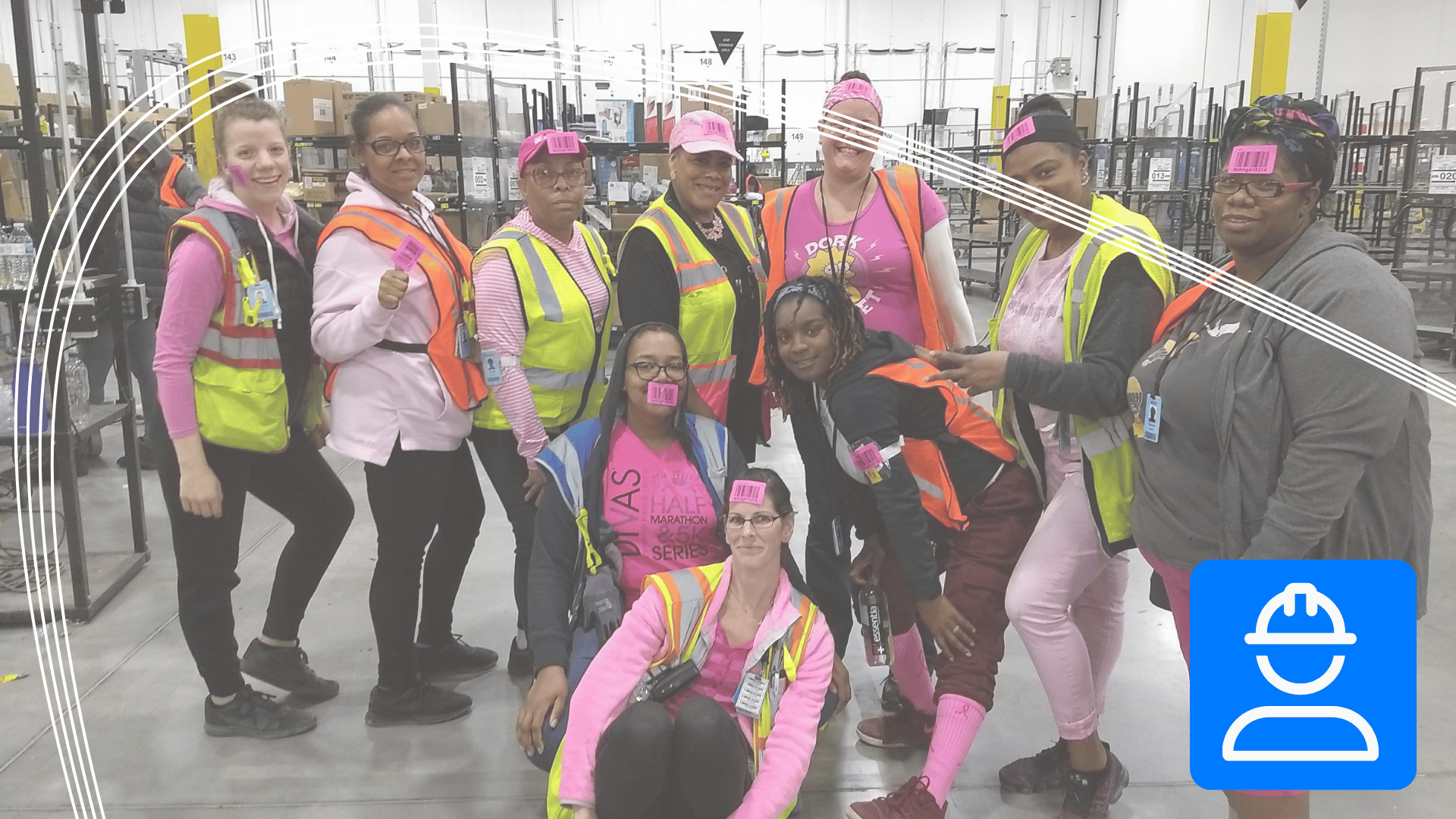I’m a new manager in a one million square foot warehouse. I’m the only female manager on my team, and I’ve just been issued a men’s L/XL high visibility vest—they’re all out of the S/M size. I put my vest on, fill it with my notebook, pen, box cutter, phone, and radio before heading to standup.
As I lead morning stretches, my vest flops all over the place. When I bend down to touch my toes, it slides down over my eyes and my radio whacks me on the side of the face. A pen falls out. I keep moving. And even though I’m a little annoyed, I don’t say anything. After all, beggars can’t be choosers, right?
I wear this vest for a few months without incident. But sometime during the rush of peak shipping season, my extra-large oversized vest pocket gets caught on a conveyor belt. The pocket rips open, but I refuse to slow down or accept that my vest might be doing more harm than good……
This was my experience as a brand-new operations manager straight out of college. I had no idea that the vest I wore for TWO (!!!) years straight was such a hazard. And I didn’t have the confidence to ask for a better one. But since then, I’ve learned that in the trades, complacency kills. It kills safety culture, employee engagement, quality and productivity—it’s one of the biggest threats to performance there is.

Providing proper women’s safety clothing is one of the easiest ways to support and protect your female workforce. And it’s not half as difficult to pull off as the status quo would have you think.
Providing proper women’s safety clothing
Two of the main arguments against women’s safety clothing are that it’s too expensive to procure and that there aren’t enough people at the site who need it. But these points work against each other. Think about it:
By most estimates, women account for only 4% of tradesmen. And unless you have a massive workforce, this means there are likely only a few female trade employees onsite at any given time. Well, if you have only a handful of female employees, the total cost of providing them adequate gear shouldn’t amount to much.
This is especially true when you compare it to the cost of outfitting your male employees with safety clothing.
Maybe in the past, when the share of women in trades was even smaller, going out of your way to get women’s PPE would have been more difficult. But it’s the 21st century, and we’ve come a long way.
Spend a little time on The Safety Rack or the /BlueCollarWomen Reddit community and you’ll find endless recommendations for women’s safety clothing options. The problem isn’t accessibility, it’s acceptance. In most companies, there’s one or two decision makers who either aren’t aware of the dangers of ill-fitting women’s safety gear, or they’ve chosen to ignore them.
Either way, it’s a missed opportunity. The long-term impact of offering women’s safety clothing far outweighs the immediate costs.
What’s the long-term impact?
Oversized, ill-fitting gear comes with all sorts of risks. It gets caught on and in equipment, leaves the body unprotected, causes fall and trip hazards, and can even cause choking or overheating (to name a few).
Providing female-specific safety clothing is an easy way to reduce safety risks. And it shouldn’t be any different than offering the right size harness, gloves, etc., to plus sized employees as well. The better safety clothing fits, the less likely it is to create a hazard for your workers. But even if you were to see no reduction in incident rates, investing in proper gear for all your employees is the right thing to do.
Boosting employee engagement
When you give women PPE and clothing designed for men, this is the message you’re sending:
“Our female employees aren’t worth the hassle of finding proper safety gear.”
While subtle, this lack of inclusivity can negatively affect performance and overall employee engagement. And that arguably costs more than it does to get female-specific gear in the first place.
When employees feel included, valued, and supported, this does wonders for productivity. All that time I spent fixing and adjusting my oversized safety vest distracted me from my responsibilities and caused unnecessary daily struggles. Simply having a better vest would have given me more space to solve actual problems within the warehouse.
Overall, providing women’s safety clothing should be the bare minimum expectation in the workplace. Once you implement a women’s PPE program, you’ll see a noticeable impact to female engagement and performance. And those are two key ingredients of building an energetic, productive, proactive, and engaged workforce.
Other posts you might like…
No posts
